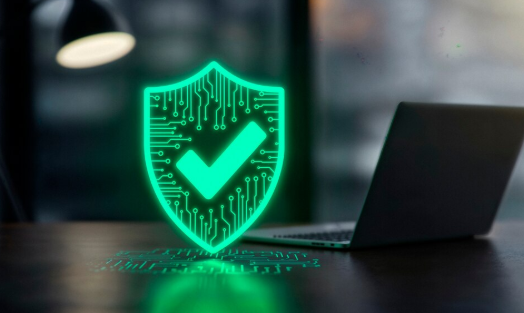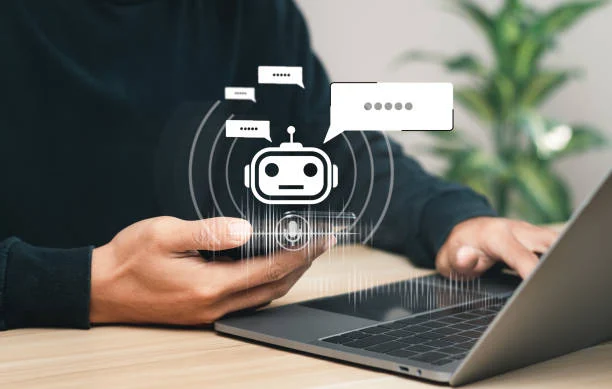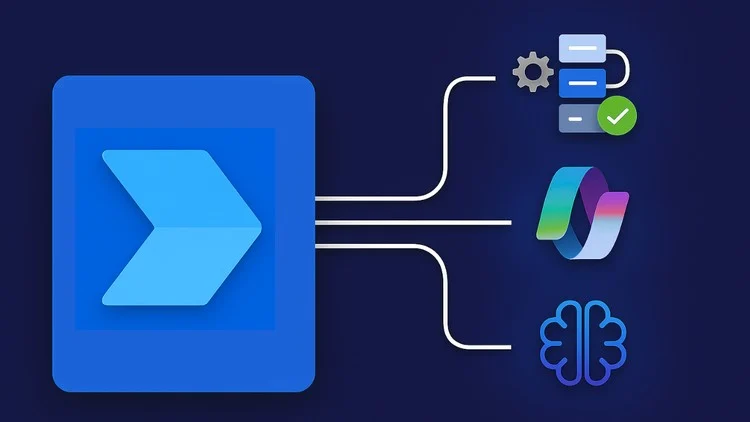No-code tools simplify app development, but they also introduce new challenges for GDPR compliance. Navigating data protection rules within these platforms requires careful attention to consent management, data mapping, and secure storage. For organizations using no-code solutions, ensuring GDPR compliance means integrating privacy measures directly into the app’s design and processes.
These tools often rely on third-party services, making vendor compliance crucial to avoid breaches. Automated compliance verification and ongoing monitoring help maintain adherence to GDPR’s principles, such as purpose limitation and data minimization. As no-code platforms evolve, staying audit-ready with real-time updates becomes essential.
By understanding the specific GDPR requirements and leveraging available compliance features in no-code environments, businesses can build secure, user-respecting applications without extensive coding. This approach supports both innovation and legal responsibility in data protection.
Understanding GDPR Requirements

The GDPR sets specific rules for collecting, processing, and storing personal data to protect individuals in the EU. Compliance involves key principles that guide data handling, recognition of user rights regarding their data, and understanding the roles and responsibilities of those managing this data.
Key Principles of GDPR
GDPR establishes several core principles including lawfulness, fairness, and transparency, which require organizations to clearly explain why and how personal data is processed.
Purpose limitation means data must only be collected for specified and legitimate purposes.
Data minimization requires collecting only what is necessary for those purposes.
Accuracy is critical; data must be kept up to date and corrected if incorrect.
Storage limitation restricts holding personal data longer than needed.
Additionally, organizations must ensure integrity and confidentiality by adopting technical and organizational measures to protect data from unauthorized access or loss.
User Data Rights
Under GDPR, individuals have several rights concerning their personal data. They have the right to access their data, allowing them to know what information is held. They can also request correction of inaccurate data.
The right to data deletion (the “right to be forgotten”) allows users to demand their data be erased when it is no longer necessary or if consent is withdrawn.
Users can also object to data processing or restrict how their data is used, especially for marketing.
Finally, GDPR requires explicit consent from users for data collection, which must be freely given, specific, informed, and unambiguous.
Responsibilities of Data Controllers and Processors
Data controllers determine the purposes and means of processing personal data, making them primarily responsible for GDPR compliance. They must implement policies ensuring all processing aligns with GDPR principles and user rights.
Data processors handle data on behalf of controllers. They must follow instructions given by controllers and maintain security standards.
Both roles require maintaining records of data activities, reporting breaches within 72 hours, and conducting regular data protection impact assessments when necessary.
Contractual agreements between controllers and processors must clearly define duties to ensure transparency and accountability.
Overview of No-Code Tools and Platforms
No-code tools enable users to build software without programming, streamlining development for various projects. These platforms target different user types, from solo makers creating minimum viable products (MVPs) to agencies managing client projects. Understanding their features and distinctions helps organizations choose the right tool.
What Are No-Code Tools
No-code tools provide visual interfaces that allow users to build apps, websites, or workflows by dragging and dropping components. They require no coding knowledge, making software development accessible to non-technical founders, small agencies, and individuals.
These platforms simplify tasks like database integration, UI design, and automation. They are especially valuable for rapid prototyping, MVP creation, and small-scale client projects where fast deployment is essential without relying on extensive development teams.
Popular No-Code Platforms
Popular no-code platforms include Imagine.bo, Webflow, Bubble, and Airtable. Imagine.bo focuses on allowing solo makers and founders to quickly design and launch products. Webflow suits agencies needing custom websites with detailed design controls.
Bubble offers complex app-building capabilities that support user authentication and workflows, useful for MVPs. Airtable combines spreadsheet functions with database features, ideal for managing client projects and internal processes with low overhead.
No-Code vs. Low-Code Solutions
No-code platforms target users with no programming experience by offering fully visual development environments. Low-code solutions, however, provide a mix of visual tools and traditional coding for advanced customization and scalability.
Low-code is often preferred by agencies with technical teams or founders who want more control over app behavior. No-code is ideal for rapid development and reduced dependency on developers, enabling faster iteration on MVPs and simpler client deliverables. Both must consider GDPR compliance, particularly in data handling and user privacy.
Why GDPR Compliance Matters in No-Code Development
No-code development platforms like Imagine.bo simplify app creation but still require strict adherence to GDPR rules. Ensuring compliance affects legal standing, company reputation, and how users perceive data handling.
Legal Obligations
GDPR applies to any platform processing personal data of EU citizens, including no-code tools. Developers and organizations must implement data protection by design, meaning privacy measures must be integrated from the start.
Failure to comply can lead to significant fines, which may reach millions of euros or 4% of global annual turnover. No-code developers must also maintain records of processing activities and respond promptly to data access or deletion requests.
For Imagine.bo users, this means carefully configuring data flows and integrations to meet GDPR’s detailed requirements. Ignoring these obligations can expose businesses to legal risks and regulatory scrutiny.
Business Reputation
Non-compliance damages brand reputation, especially as data privacy becomes central to consumer expectations. Companies using no-code solutions risk public backlash if users’ data is mishandled or breached.
Demonstrating GDPR compliance signals responsibility and professionalism. It can be a competitive advantage, distinguishing a product or service in saturated markets.
Businesses building with Imagine.bo benefit by embedding privacy safeguards early on, showing customers that their personal information is respected and protected. This reduces negative publicity and builds resilience against potential security incidents.
User Trust and Transparency
GDPR emphasizes giving individuals control over their data—including clear information on how it is used. No-code platforms must enable transparent communication and easy data management for end users.
Trust increases when users know their rights are respected and can easily opt out or request data deletion. Developers should ensure privacy notices, consent forms, and data access options are straightforward and accessible.
With tools like Imagine.bo, incorporating transparency features helps maintain user confidence. It fosters long-term engagement and minimizes complaints or legal challenges related to privacy concerns.
Core GDPR Features in No-Code Platforms
No-code platforms must implement specific features to handle user data lawfully and securely. These include managing how data is stored and processed, ensuring consent is obtained and tracked, allowing users to access their data, and enabling data deletion upon request.
Data Storage and Processing
No-code tools must enforce strict controls on data storage locations and processing practices. This includes limiting data storage to GDPR-compliant servers and ensuring data is encrypted both at rest and in transit.
Data retention policies should be configurable so that data is held only as long as necessary. Platforms like Imagine.bo typically provide settings to automate data retention and deletion schedules.
Processing user data must adhere to principles of lawfulness and purpose limitation. This means data collected should only be processed for the declared purpose, avoiding excessive or unrelated use.
User Consent Management
Effective consent management is critical to GDPR compliance in no-code applications. Platforms should support explicit consent capture, logging when and how consent was granted.
This includes integrating customizable consent banners or forms that clearly describe the data collected and its purpose. Consent must be revocable, allowing users to withdraw permission easily.
Tools often include dashboards to track consent status for each user and generate compliance reports. Consent records help demonstrate accountability during audits or regulatory checks.
Data Access and Portability
No-code platforms should allow users to access their personal data in a structured, commonly used format. This fulfills the GDPR right to data portability.
Users can request copies of their data, which should be exported promptly without compromising security. Imagine.bo and similar tools provide features to generate such exports on demand.
Implementing role-based access controls ensures that only authorized personnel can view or modify user data, minimizing the risk of unauthorized exposure during the porting process.
Right to be Forgotten
Compliance requires the ability to fully delete user data upon request. No-code tools must support complete data erasure from databases, backups, and logs.
This process must be thorough and permanent, not merely making data inaccessible but physically removing it where feasible.
Platforms also need workflows to handle deletion requests promptly and confirm completion to users. Maintaining audit trails of these actions helps meet GDPR accountability requirements.
Security Standards and Best Practices
No-code platforms require rigorous security protocols to meet GDPR compliance. Key elements include establishing foundational security measures, ensuring data encryption within reliable infrastructure, and maintaining ongoing vulnerability management to prevent breaches.
Default Security Measures
No-code tools should implement strong security checks by default to safeguard user data. This includes role-based access control, two-factor authentication (2FA), and automated logging of user activities. These measures help track data access and ensure only authorized personnel interact with sensitive information.
Platforms certified under standards like SOC 2 demonstrate commitment to operational security, which is crucial for GDPR compliance. Selecting a no-code provider with such certifications helps ensure consistent enforcement of security policies.
Additionally, deployment environments must support production-ready app standards, including regular security audits and strict data handling protocols.
Encryption and Secure Infrastructure
Encryption is mandatory for data at rest and in transit within no-code applications. Providers leveraging scalable infrastructure like AWS, GCP, or Vercel often offer built-in encryption services that meet GDPR requirements.
Data stored on these platforms should use strong encryption algorithms such as AES-256. For data in transit, TLS 1.2+ ensures connections remain secure.
Choosing cloud providers with regional data centers helps enforce data sovereignty mandates. This ensures personal data stays within approved jurisdictions, a key GDPR obligation.
Vulnerability Management
Regular vulnerability scanning and patch management are critical. No-code platforms must continuously identify security gaps through automated tools and manual audits. This helps prevent exploitations resulting from outdated components or misconfigurations.
It is important that developers integrate vulnerability management processes early in the app lifecycle. Coordinated governance policies should mandate scheduled assessments, immediate remediation of findings, and real-time intrusion detection.
Consistent updates and security patches supported by the underlying infrastructure contribute to maintaining compliance and reducing exposure to cyber threats.
Ensuring GDPR Compliance with Imagine.bo
Imagine.bo integrates compliance into its platform by embedding key security and procedural elements that meet GDPR requirements. It focuses on automating protection measures and simplifying regulatory adherence through structured processes.
Automated Security Features
Imagine.bo uses automated security checks to continuously monitor data handling and storage. These checks verify encryption standards, access controls, and data anonymization to reduce risks associated with personal data processing.
The platform also employs an AI-generated blueprint that maps user workflows against GDPR requirements. This helps identify potential compliance gaps early in development.
Users benefit from one-click build functionality that includes pre-configured security settings. This standardizes protections across applications, ensuring consistent enforcement without manual configuration.
Built-in Compliance Workflows
Imagine.bo offers built-in workflows designed to align with GDPR processes such as consent management, data retention, and breach notifications. These workflows enforce steps like active consent collection and automated data deletion schedules.
The platform enables real-time tracking of compliance status throughout the application lifecycle. This allows organizations to document GDPR adherence practices with transparency and ease.
Automation of these processes reduces human error and accelerates compliance efforts, making it easier to manage personal data responsibly on no-code applications.
Expert Support for Legal Questions
Imagine.bo provides direct expert support to address complex GDPR legal queries. Users can access guidance on interpreting regulations and implementing compliant data practices within their specific use cases.
This support team helps clarify nuanced issues, such as vendor responsibilities and cross-border data transfers. It also assists in customizing workflows to fit legal requirements accurately.
Having expert resources available reduces liability risks and supports organizations in maintaining ongoing compliance with evolving GDPR standards.
Steps to Build GDPR-Compliant Apps in No-Code Environments
Creating a production-ready app with no-code platforms demands precise handling of user data and clear consent mechanisms. Effective mapping of data flows, tailored consent collection, and reliable deletion processes are essential to meet GDPR requirements.
Mapping Data Flows
Mapping data flows means identifying where user data is collected, processed, stored, and shared. This step requires a thorough audit of every component within the no-code tool, including external integrations like cloud providers or APIs.
Documentation should include data types, purposes, and storage locations. Visual tools or flow charts often help simplify complex data paths. This level of transparency supports ongoing compliance and aids in timely breach response if necessary.
Customizing User Consent
User consent in GDPR must be explicit, informed, and freely given. No-code apps need clear interfaces for users to grant or withdraw consent, covering specific data processing activities.
Consent management should track what users agreed to and when. Consent options must be granular enough to allow selective permissions rather than blanket acceptance. Automated reminders or updates on policy changes are also advisable to maintain compliance.
Implementing Data Deletion Requests
The right to erasure requires apps to delete user data upon request within a reasonable timeframe. No-code platforms should enable quick identification of user data across all modules.
Processes for receiving, verifying, and acting on deletion requests must be documented and tested. Confirmation of completed deletions should be communicated to users. Automating these workflows reduces risk of non-compliance and increases user trust.
Pitfalls and Common Mistakes in GDPR Compliance
Many compliance issues arise from gaps in understanding or managing data flows and policies. Key areas often neglected involve the management of third-party services, maintaining thorough records, and keeping privacy disclosures current.
Overlooking Third-Party Integrations
Using no-code tools often involves numerous third-party integrations. Each connection can expose personal data to external processors, creating compliance risks if not properly managed.
It is critical to evaluate all third-party services for GDPR adherence before integration. Failure to ensure these vendors follow GDPR principles like data minimization and security can result in liability for the app creator.
Moreover, contracts must explicitly state each party’s responsibilities regarding data protection. Without this, it is difficult to demonstrate accountability during audits or investigations, increasing the chance of penalties.
Insufficient Documentation
Comprehensive documentation is a common compliance shortfall. Many no-code users neglect to maintain detailed records of data processing activities, which the GDPR explicitly requires.
Accurate data inventories help organizations map the flow of personal data. Lack of such documentation impedes the ability to respond to data subject requests or prove compliance to authorities.
Users should record consent management processes, security measures, and data retention schedules. Without clear documentation, proving lawful basis for data processing becomes challenging.
Failure to Update Privacy Policies
Privacy policies that do not reflect current data practices present another frequent mistake. No-code apps often evolve rapidly, adding new features or integrations that change data usage.
Policies must be revised immediately when significant changes occur, ensuring transparency about how personal data is collected, stored, and processed. Outdated policies risk violating the GDPR’s fairness and transparency requirements.
Clear communication of policy updates to users is essential. Failure to notify users undermines trust and may lead to complaints or investigations.
Scaling and Managing Compliance Over Time
Ensuring GDPR compliance in no-code tools requires adapting to growing data volumes while maintaining effective oversight. A scalable infrastructure and regular audits are essential to handle traffic spikes and evolving regulations.
Handling Increased Data Volume
No-code platforms must support scalable infrastructure to manage rising volumes of personal data without compromising compliance. This involves implementing automated data classification and retention policies that adjust as datasets expand.
Traffic spikes can increase data processing demands. Systems should maintain performance and security during these periods to prevent data loss or breaches. Effective data minimization techniques reduce unnecessary data storage, limiting risks associated with large-scale datasets.
Additionally, tools must provide clear controls for data deletion and updates to meet GDPR’s right to erasure and accuracy requirements. Automation can help enforce these controls consistently across growing data repositories.
Continuous Compliance Audits
Regular compliance audits are critical to verify ongoing GDPR adherence in no-code environments. Automated audit tools can streamline the review process by tracking data access, consent records, and policy enforcement in real time.
Audits should focus on identifying deviations caused by system updates or integration of new features. This proactive approach prevents compliance gaps before they escalate into violations.
Incorporating logging and monitoring mechanisms helps maintain transparency for all data handling activities. Detailed audit trails enable faster response to regulatory inquiries and support accountability during inspections.
Future Trends in GDPR and No-Code Platforms
No-code platforms are evolving to address increasingly complex data privacy requirements. Advancements in AI and regulatory changes will shape how these tools support data protection and compliance.
AI-Driven Compliance Automation
AI integration in no-code tools will enable automated GDPR compliance with greater precision. Platforms will use AI-generated blueprints to create customizable data processing workflows aligned with legal requirements, reducing manual errors.
These AI systems will also integrate expert workflows, allowing compliance teams to oversee and refine AI actions, ensuring decisions reflect both automated insights and human judgment. This hybrid approach increases accuracy and accountability.
Automation will cover tasks such as data subject access requests, consent management, and breach detection. By simplifying these processes, no-code platforms will help organizations maintain compliance while reducing operational costs.
Emerging Data Protection Regulations
No-code platforms must adapt swiftly to evolving data protection laws beyond GDPR, such as the proposed ePrivacy Regulation and updates in other jurisdictions.
These changes will push platforms to include broader data handling controls, enhanced transparency features, and stricter consent mechanisms. Real-time policy updates within platforms will become necessary.
Providers will increasingly emphasize flexible, modular compliance components that organizations can adjust as new regulations emerge. This adaptability ensures that no-code tools remain effective amid shifting legal landscapes.





